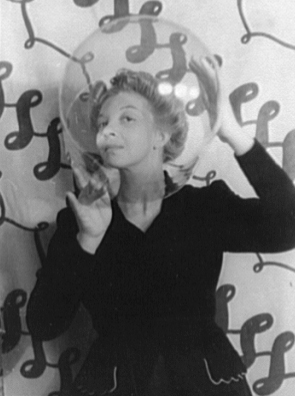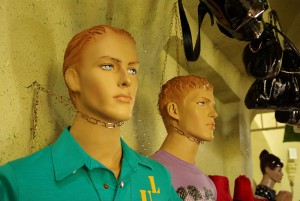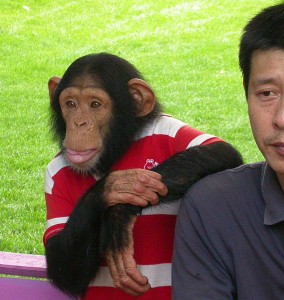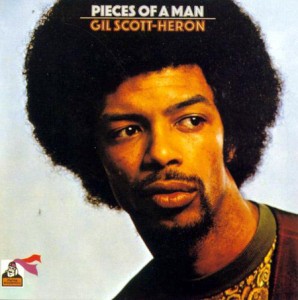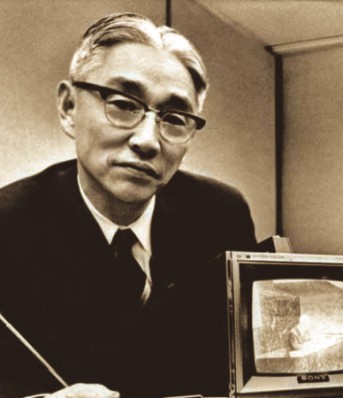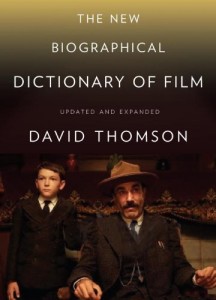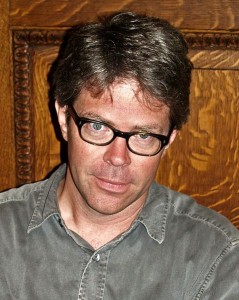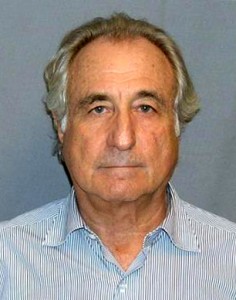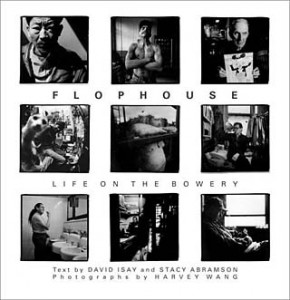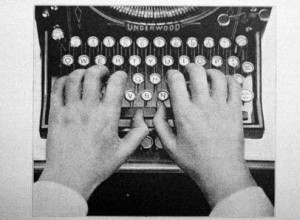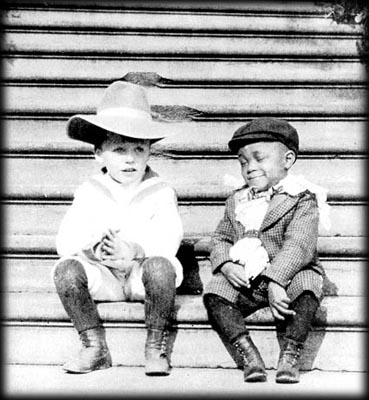He meows for us all. (Thanks Reddit.)
 Some people can sense earlier than others that something is being done incorrectly, that methods are amiss, that the whole thing is a sham. Brooklyn baseball fan Walter Lappe was just such a person. I knew about Bill James and Eric Walker and the Moneyball era of advanced baseball statistics that their number-crunching ushered in, but I had never heard of Lappe, who was on the same path years earlier, trying to instill science and objective reasoning into baseball. He teamed with renegade ex-pitcher Jim Bouton to publish something called The Baseball Brain, which was the first attempt by “barbarians” to crash the gate. Lappe and his stats don’t seem to have arrived at a lot of correct answers, but he was asking the right questions before others were. An excerpt from a July 1, 1974 New York magazine article that Bouton penned about their attempt to reinvent baseball:
Some people can sense earlier than others that something is being done incorrectly, that methods are amiss, that the whole thing is a sham. Brooklyn baseball fan Walter Lappe was just such a person. I knew about Bill James and Eric Walker and the Moneyball era of advanced baseball statistics that their number-crunching ushered in, but I had never heard of Lappe, who was on the same path years earlier, trying to instill science and objective reasoning into baseball. He teamed with renegade ex-pitcher Jim Bouton to publish something called The Baseball Brain, which was the first attempt by “barbarians” to crash the gate. Lappe and his stats don’t seem to have arrived at a lot of correct answers, but he was asking the right questions before others were. An excerpt from a July 1, 1974 New York magazine article that Bouton penned about their attempt to reinvent baseball:
“If I told you that some nutty baseball fan from Brooklyn held the secret for getting the Mets and Yankees into the World Series, you wouldn’t believe me. It sounds like something from Damn Yankees or like that old movie It Happens Every Spring, where Fred MacMurray or Ray Milland or somebody invents a magic substance which repels wood and when you rub it on baseballs they become unhittable. Our fan from Brooklyn doesn’t have anything that sneaky, but what he does have could be just as revolutionary. I’ve seen his stuff, and I believe. Now, if only Yogi Berra and Bill Virdon (Mets and Yankees managers as of this writing) will read this, we’ll all be rolling in champagne and ticker tape this fall.
The fan from Brooklyn who could cause baseball’s first intra-stadium World Series is Walter Lappe (pronounced ‘Lap’), who believes that big-league managers rarely use the best strategy and players don’t seem to know what they’re doing out there. For the last 20 of his 49 years, Walter as a hobby, has been keeping his own statistics on the New York ball teams. He listens to games on the radio and writes down where each batter hits the ball, who’s pitching, balls and strikes, runners on base, weather conditions, phases of the moon, etc. Now that’s pretty nutty, but so is flying a kite in a rainstorm.
I don’t know if Benjamin Franklin has a brother, but Walter has one named Henry who is always saying, ‘Walter, why don’t you stop wasting your time listening to baseball games and go get a job, Walter?’ But how can someone get a job when you’re unlocking the secrets of the universe?”
_________________________
A 1970s ESPN Sportscenter report on Bouton’s controversial book, Ball Four. What mutton chops, what suits!
Tags: Jim Bouton, Walter Lappe
Carl Van Vechten took this classic 1936 photograph of Argentine surrealist painter Leonor Fini, she of the experimental hats and ever-present cats. From Fini’s 1996 obituary in the Independent: “In the 17th century Leonor Fini would have been burnt as a witch. Surrounded by cats, and with feline eyes herself, she exuded what her one-time lover Max Ernst described as ‘Italian fury, scandalous elegance, caprice and passion.’ In photographs you would take her for beautiful in the manner of Bianca Jagger but, according to the American art dealer Julian Levy, she was not a beauty as such, in that ‘Her parts did not fit well together: head of a lioness, mind of a man, bust of a woman, torso of a child, grace of an angel, discourse of the Devil . . .’
Levy confirms my belief that if she had been born in the age of the extra teat and the familiar, this lady was for burning. “Her allure,” he says, “was an ability to dominate her misfitted parts so that they merged into whatever shape her fantasy wished to present from one moment to the next.” You can almost hear the faggots crackle.
Leonor Fini was of mixed Spanish, Italian, Argentinian, and Slavic blood, a formidable genetic cocktail. She was born in Buenos Aires in 1908 but grew up in Trieste. Her formal education was, as might be imagined given her independent and imperious temperament, fragmentary, but she had the run of her uncle’s large library in Milan and also travelled widely in Italy and Europe visiting all the museums and taking in such then unfashionable painters as the Mannerists, a school later reflected in her own work. In reproduction she was to add Beardsley, the German Romantics and the British Pre-Raphaelites – all evidence of a Surrealist eye.
Her facility was precocious. By the time she was 17 she was already painting commissioned portraits. It was however in 1936 when she moved to Paris and became friendly with Ernst, the Eluards, Brauner and others, that she began to paint Surrealist images and to draw close to the movement. Close but not of. Like her greater contemporary Frida Kahlo, Fini refused to bend her knee before Andre Breton, and declined to accept the iconic role of child-woman or to accept his belief in l’amour fou, the monogamist obsession with one person as opposed to bisexual narcissism. She did however exhibit with the group as a kind of fellow traveller.”
Tags: Carl Van Vechten, Leonor Fini
Ray Bradbury in the late ’60s discussing his cultural role during the adaptation of his short-story collection, The Illustrated Man, which rested (uneasily) at the nexus of technology and psychology.
Tags: Ray Bradbury
Like reverse product placement, a “shoppable video” is an online video in which models engage in banal activity, a movie of sorts, while showing off products. Susannah Edelbaum of the High Low has an interesting post about a Korean clothing retailer Oki-Ni, which has created an interactive video called “The Game.” Ridley Scott’s production company turned out this very mild “action film” which has dudes playing table tennis in a sprawling and spartan home. Everything they’re wearing can be purchased with a couple of clicks.
It’s strange to see the full extrapolation of product placement, where the clothes are essentially wearing the people, but it’s only a more extreme version of almost every film and TV program we watch. The catalog has come to life, or some denatured semblance of life. And it will likely only grow slicker and more elaborate as time goes by. Because of the interactive element of the video, it can’t be embedded, but watch it here.
Tags: Susannah Edelbaum
Jack Nicholson was part of a group of ’70s California investors trying to market clean, cheap hydrogen fuel that was created by solar. “There are a lot of good things that can come from using the power of the sun,” Nicholson said. Never panned out, obviously.
Tags: Jack Nicholson
From “New York Is Killing Me,” Alec Wilkinson’s smart and sad 2010 New Yorker profile of Gil Scott-Heron:
“Sometimes when I spoke to people who used to know Scott-Heron, they told me that they preferred to remember him as he had been. They meant before he had begun avidly smoking crack, which is a withering drug. As a young man, he had a long, narrow, slightly curved face, which seemed framed by hair that bloomed above his forehead like a hedge. The expression in his eyes was baleful, aloof, and slightly suspicious. He was thin then, but now he seems strung together from wires and sinews—he looks like bones wearing clothes. He is bald on top, and his hair, which is like cotton candy, sticks out in several directions. His cheeks are sunken and deeply lined. Dismayed by his appearance, he doesn’t like to look in mirrors. He likes to sit on the floor, with his legs crossed and his propane torch within reach, his cigarettes and something to drink or eat beside him. Nearly his entire diet consists of fruit and juice. Crack makes a user anxious and uncomfortable and, trying to relieve the tension, Scott-Heron would sometimes lean to one side or reach one hand across himself to grab his opposite ankle, then perhaps lean an elbow on one knee, then maybe press the soles of his feet together, so that he looked like a swami.” (Thanks Longform.)
••••••••••
“Should’ve been asleep when I turned the stack of records over and over / So I wouldn’t be up by myself / Where did the night go? / Should go to sleep now.”
Tags: Alec Wilkinson, Gil Scott-Heron
Legendary Sony founder Akio Morita was reputedly the tech titan that Steve Jobs studied most closely. In the 1950s, Morita opened a start-up in the basement of a bombed-out department store and created the world’s first transistor radio. He was more responsible than anyone for Japan emerging as a world leader in consumer electronics. In 1980, he visited Tom Snyder to unveil a line of new products.
From “Akio Morita: Guru of Gadgets,” Kenichi Ohmae’s 1998 Time article about the late-life Morita: “Almost exactly five years ago, Akio Morita–Mr. Sony–fell to the ground during a game of tennis. The co-founder and chairman of the board had suffered a stroke. He has since been in a wheelchair. This is particularly sad, as Morita had never been able to sit still and relax. At 72, he was playing tennis at 7 a.m. each Tuesday. I know this well because I would practice on the court next to him. My tennis, however, was very different from his. I played with an instructor, and if I was tired, I would just take a break. Not him. He challenged everybody, including young athletes.
This was in keeping with a man who created one of the first global corporations. He saw long before his contemporaries that a shrinking world could present enormous opportunities for a company that could think beyond its own borders, both physically and psychologically. And he pursued that strategy with his relentless brand of energy in every market, particularly the U.S. It is notable that this year, according to a Harris survey, Sony is rated the No. 1 brand name by American consumers, ahead of Coca-Cola and General Electric.”
Tags: Akio Morita, Kenichi Ohmae, Tom Snyder
From “Hollywood: A Love Story,” an excellent article in the Atlantic by astute cultural critic Clive James about David Thomson, that woolly film maven best known for his indispensible and idiosyncratic reference book:
“After five editions in 35 years, Thomson’s famous compendium of biographical sketches about the movie people—hey, it’s read by the movie people, the movie people are fighting to get into it, male stars measure their manhood by the length of their entry—is still a shantytown with the ambitions of a capital city. It gets bigger all the time without ever becoming more coherent. But with more than a thousand pages of print to wander in, only the most churlish visitor would complain about lack of cogency. Better to rejoice at the number of opportunities to scream in protest at what the author has left out, put in, skimmed over, or gone on about with untoward zeal. As a book meant to be argued with, it’s a triumph.
Also, there is the frustrating consideration that Thomson is often right. Most people of his generation who have spent their lives seeing every properly released movie even if it stars Steven Seagal are incapable of judging them. The reason is simple: those people are monomaniacs. Thompson has found time to do other things: read books, breathe clean air, cook and eat real food.”
••••••••••
David Thomson in 2010 at Google Talks:
Tags: Clive James, David Thomson
This stuff is crazy. Henrik Ehrsson at Sweden’s Karolinska Institute is able to make people believe that they are giants or barbie dolls with the aid of a virtual reality headset. It’s creepy and odd and sort of spectacular.
From an article about the research in Discover: “In Alice’s Adventures in Wonderland, the titular heroine quaffs a potion that shrinks her down to the size of a doll, and eats a cake that makes her grow to gigantic proportions. Such magic doesn’t exist outside of Lewis Carroll’s imagination, but there are certainly ways of making people thinkthat they have changed in size.
There’s nowhere in the world that’s better at creating such illusions than the lab of Henrik Ehrsson in Sweden’s Karolinska Institute. In a typical experiment, a volunteer is being stroked while wearing a virtual reality headset. She’s lyng down and looking at her feet, but she doesn’t see them. Instead, the headset shows her the legs of a mannequin lying next to her.
As she watches, Bjorn van der Hoort, one of Ehrsson’s former interns, uses two rods to stroke her leg, and the leg of the mannequin, at the same time. This simple trick creates an overwhelming feeling that the mannequin’s legs are her own. If the legs belong to a Barbie, she feels like she’s the size of a doll. If the legs are huge, she feels like a 13-foot giant.”
Tags: Henrik Ehrsson
Jonathan Franzen has an excellent essay, “Liking Is For Cowards, Go For What Hurts,” in the New York Times, which makes many salient points about the pleasing, dishonest mirror that is consumer electronics:
“Consumer technology products would never do anything this unattractive, because they aren’t people. They are, however, great allies and enablers of narcissism. Alongside their built-in eagerness to be liked is a built-in eagerness to reflect well on us. Our lives look a lot more interesting when they’re filtered through the sexy Facebook interface. We star in our own movies, we photograph ourselves incessantly, we click the mouse and a machine confirms our sense of mastery.
And, since our technology is really just an extension of ourselves, we don’t have to have contempt for its manipulability in the way we might with actual people. It’s all one big endless loop. We like the mirror and the mirror likes us. To friend a person is merely to include the person in our private hall of flattering mirrors.”
••••••••••
Franzen discusses some lesser-known books he loves:
Tags: Jonathan Franzen

"The peddler of hot sausages at the corner of Fulton and Sands streets, was folding his tent, when he was accosted by James Kenny." (Image by Berenice Abbott.)
A nineteenth-century sausage peddler and some random nudnik decided to have a battle royal in the street, as chronicled in this January 18, 1887 article in the Brooklyn Daily Eagle:
“It was nearly 2 o’clock this morning when Robert Henry Moore, of 67 Nassau Street, the peddler of hot sausages at the corner of Fulton and Sands streets, was folding his tent, when he was accosted by James Kenny, of 91 Orange Street, who accused the peddler of refusing to drink with him on New Years Eve. Moore repudiated the accusation and offered to produce a cloud of witnesses to testify that he was constitutionally unable to refuse such an invitation, but Kenny clinched with him and the two men writhed in a debris of hot sausages and cakes and hotter charcoal. Bridge Officer Courtney separated the combatants and Justice Walsh further separated them this morning by sending Kenny to the Penitentiary for sixty days and putting Robert Henry Moore in jail for one day. Moore is a favorite with the bridge officers, who say he is peaceable and very generous with his edibles.”
Tags: Bridge Officer Courtney, James Kenny, Justice Walsh, Robert Henry Moore
Michael Crichton predicts the future (fairly poorly) in 1999: Printed matter will be fine, movies will soon be dead, communications will be consolidated into fewer hands. Well, he did foresee YouTube and large-scale terrorism in NYC.
Crichton, who was fascinated by science and often accused of being anti-science, commenting in a 1997 Playboy interview on technology creating moral quandries we’re not prepared for: “I think we’re a long way from cloning people. But I am worried about scientific advances without consideration of their consequences. The history of medicine in my lifetime is one of technological advances that outstrip our ethical systems. We’ve never caught up. When I was in medical school—30-odd years ago—people were struggling to deal with mechanical-respiration systems. They were keeping alive people who a few years earlier would have died of natural causes. Suddenly people weren’t going to die of natural causes. They were either going to get on these machines and never get off or—or what? Were we going to turn the machines off? We had the machines well before we started the debate. Doctors were speaking quietly among themselves with a kind of resentment toward these machines. On the one hand, if somebody had a temporary disability, the machines could help get them over the hump. For accident victims—some of whom were very young—who could be saved if they pulled through the initial crisis, the technology saved lives. You could get them over the hump and then they would recover, and that was terrific.
But on the other hand, there was a category of people who were on their way out but could be kept alive. Before the machine, ‘pulling the plug’ actually meant opening the window too wide one night, and the patient would get pneumonia and die. That wasn’t going to happen now. We were being forced by technology to make decisions about the right to die—whether it’s a legal or religious issue—and many related matters. Some of them contradict longstanding ideas in an ethically protected world; we weren’t being forced to make hard decisions, because those decisions were being made for us—in this case, by the pneumococcus.
This is just one example of an ethical issue raised by technology. Cloning is another. If you’re knowledgeable about biotechnology, it’s possible to think of some terrifying scenarios. I don’t even like to discuss them. I know people doing biotechnology research who have decided not to pursue avenues of research because they think they’re too dangerous. But we go forward without sorting out the issues. I don’t believe that everything new is necessarily better. We go forward with the technology while the ethical issues are still up in the air, whether it’s the genetic variability of crop streams, which is a resource in times of plant plagues, to the assumption that we all have to be connected all the time. The technology is here so you must use it. Do you? Do you have to have your cell phone and your e-mail address and your Internet hookup? I was just on holiday in Scotland without e-mail. I had to notify people that I wouldn’t be checking my e-mail, because there’s an assumption that if I send you an e-mail, you’ll get it. Well, I won’t get it. I’m not plugged in, guys. Some people are horrified: ‘You’ve gone offline?’ People feel so enslaved by technology that they will stop having sex to answer the telephone. What could be so important? Who’s calling, and who cares?”
Tags: Michael Crichton
Surrealist/Anarchist/Post-Apocalyptic Press/Publisher seeks Benefactor – $1 (Downtown)
Our letterpress printing outfit is seeking a moderately well-funded and enthusiastic benefactor for indulgent and potentially unsalable printing and publishing projects.
Trust funders, hedge funders & corporate zealots/sleazebags all welcome~ we pass no judgement.
If you’d like to be involved in the semi-devious manipulation of society and culture through unpopular(?) speech and offensive(?) art we’d love to speak to you.
No obligations; no hard feelings.
Pilkington, idiot savant sidekick to Ricky Gervais and Stephen Merchant, opines on the future. Not so crazy, really.
Photographer Harvey Wang and radio documentarian David Isay gravitate to those people, places and things that have passed into obsolescence in our culture and capture their essence before they become obsolete. They focus a good deal of attention on NYC, a place that changes rapidly, often driven more by the lure of the dollar than the pull of history. The two collaborated with Stacy Abramson on the great 2000 book, Flophouse: Life on the Bowery, which looked at the lowly boarding houses that still stood in that famous (and infamous) neighborhood like anachronisms with bedbugs. But despite their shabby shape, these lodgings were filled with the fascinating stories of the tenants, which Wang and Isay chronicled with great care. You can listen to audio documentaries about the flophouses here. The opening copy of the book:
“From the end of the nineteenth century through the middle of the twentieth, the Bowery was the world’s most infamous skid row. Under the shadow of the elevated Third Avenue line, the sixteen-block stretch of lower Manhattan was jammed with barber schools, bars, missions, men’s clothing stores, slop joints (cheap restaurants), flophouses, and tattoo parlors. The estimates vary, but in its heyday somewhere between 25,000 and 75,000 men slept on the Bowery each night.
Today the barber colleges are all gone. Al’s, the last rummy bar on the Bowery, closed in 1993. There are no tattoo parlors, no employment agencies, no pawnshops, no burlesque houses, no secondhand stores, no El train. All that remains of the skid-row Bowery are a single mission and a handful of flops, still offering the shabbiest hotel accommodations imaginable for as little as $4.50 a night.”
More Harvey Wang and David Isay posts:
- Harvey Wang and David Isay visit the Dinosaur Gardens in Moscow, Texas.
- Harvey Wang profiles NYC seltzer bottler George Williams.
- The murder of Congressman Leo Ryan recalled on Isay’s StoryCorps site.
Tags: David Isay, Harvey Wang, Stacy Abramson
Really good article by David Streitfeld in the New York Times about the phenomenon of Groupon, a company running forward at a breakneck pace but still (wisely) looking over its shoulder. The Internet outfit inhabits the Chicago building made famous by Montgomery Ward, the once-powerful retailer which also changed the face of commerce in its own day. An excerpt:
“CHICAGO has revolutionized retailing before. In 1872, a dry-goods salesman named Aaron Montgomery Ward wearied of visiting far-flung stores, so he mailed descriptions of goods directly to rural residents. The orders were sent by a new delivery system that wreaked havoc on traditional commerce: the railroad.
Ward’s innovation was as much of a cultural achievement as a merchandising one — farmers read his catalogues for pleasure, dreaming of a better world. They were the foundation of a retail empire that lasted more than a century until the management failed one time too often to anticipate a shift in consumer tastes. Ward’s went bust a decade ago.
Groupon’s corporate headquarters are in the old Montgomery Ward building, which should be reminder enough of the dangers of neglecting the customer’s desires. But Mr. Mason, the chief executive, sought to underline the point by putting on the wall certain business magazine covers. They celebrate tech start-ups — the social network Friendster, the music site MySpace — at the moment they seemed poised for greatness, before they irrevocably stumbled.”
••••••••••
Montgomery Ward commercial, 1967:
Montgomery Ward commercial, 1982:
Montgomery Ward going-out-of-business commercial, 2001:
Soundless and oddly poetic footage of Blackbeard’s anchor being recovered:
From a 1945 Life magazine article entitled “American Legends“: “The lonely stretch of sand, sea and sky above is Ocracoke Inlet, on the coast of North Carolina, where the great pirate Edward Teach, or Blackbeard, used to hide. The local people say that Blackbeard gave the place its name when, oppressed one day by its loneliness, he cried, ‘Oh crow, cock.’ (But Ocracoke is really an Indian name.) Blackbeard was born in England but lived in North Carolina during his busy career as a pirate. He was a friend and perhaps even a partner of the governor, Charles Eden. Blackbeard came to a violent end on Nov. 22, 1718 when Lieut. Maynard of the Royal Navy cornered him at Ocracoke, killed him and nailed his head to the bowsprit of his ship. Blackbeard was never popular while he was alive but he was brave and had a rough, bloody humor. The people who lived along the eastern coast have made a legend out of his murderous deeds. Once he wanted to marry the governor’s pretty daughter even though he had been married 12 times. But she preferred another man. Blackbeard kidnapped his rival, cut off one hand and threw him into the sea. He sent the severed hand to Miss Eden in a silver casket and then married a different girl.”
Tags: Blackbeard, Charles Eden, Edward Teach, Lieut. Maynard, Miss Eden
Recent footage of the great writer-composer Gil Scott-Heron, who just died.
- Listen to “The Revolution Will Not Be Televised.”
- Listen to “Whitey on the Moon.”
Tags: Gil Scott-Heron
Some search-engine keyphrases bringing traffic to Afflictor this week:
- Fred Wilpon installing tampon machine in Mets clubhouse.
- Old Print Articles: Children forced to become street musicians (1873) + Young ruffians torment candy store owner (1890) + A gallery of rough characters (1884-95).
- Classic Photographs: Charles Mingus celebrates the American Bicentennial (1976).
- Featured Videos: Monsanto’s House of the Future at Disneyland (1957) + Creepy VHS buddy wants to be your friend (1986) + Eames solar-powered “Do-Nothing Machine” (1957) + Young David Letterman rocking a gold necklace + Hunter S. Thompson political ad (1970) + Orson Welles two hours before he died + Thoughtful short doc about hippies (1973) + Hokum about so-called ancient astronauts (1970) + Astronaut pratfall on the moon (1972) + Unlock your door with your smart phone + Experimental BBC adaptation of J.G. Ballard’s Crash (1970s) + J.G. Ballard discusses violence (1986) + Governor sees UFO (1973) + Colonel Sanders invades the Soviet Union (1960s) + Last handwritten newspaper in the world.
- Recently Posted on NYC’s Craigslist: I’m selling my lady eggs + You can do my college paper for me if you just focus + Jesus and band of zombies in Times Square + Yikes! + A guy named Dominic wants to be rich + Selling 1868 letter written by armless, legless sideshow performer.
- How Quisp Cereal and other dead products come back to life.
- Jeffrey Toobin profiles embattled Mets owner Fred Wilpon.
- Hunter S. Thompson understood the ego-feeding aspect of the Net in 1997.
- Artist Cory Arcangel remimagines video-game graphics.
- Douglas Coupland explains why he loves plastics.
- Bernard-Henri Lévy labels Los Angeles a “post-historical city.”
- Roger Ailes, that ghastly man, thinks Sarah Palin is an idiot.
- “Invisible Machine” is a 1968 doc about computer use in communications research.
- Geoffrey Hoyle recalls his visionary 1972 children’s book.
- Charles Darwin documents his terrible stomach problems in 1865.
- Steve Boone writes an excellent series on homelessness in NYC.
- How Neal Cassady came to drive the Merry Pranksters’ bus.
- Scientists are encouraging robots to develop their own language.
- Paul Simon sings about the terror of technological progress.
- U.S. intelligence experts trying to understand metaphors from around the world.
- Chris Anderson’s original Long Tail article from 2004.
- This week’s Afflictor keyphrase searches.
The 70-year-old legend passed away soon after this talk with Merv Griffin.
More Orson Welles Posts:
- Looking back at Welles’ 1974 cine-essay, F Is for Fake.
- Orson Welles narrates the 1972 Future Shock documentary.
- Orson Welles hosts a 1975 doc about extraterrestrials.
- Orson Welles drunk while filming a wine commercial.
Tags: Merv Griffin, Orson Welles
Since language is available in critical mass all over the Internet, researchers will continue to mine this material to promote more efficient marketing or to determine the nature of our hearts and minds. The Atlantic has a new article about an intelligence branch of the government running a program designed to unravel how people around the globe use metaphors. An excerpt from Alexis Madrigal’s article:
“Every speaker in every language in the world uses them effortlessly, and the Intelligence Advanced Research Projects Activity wants know how what we say reflects our worldviews. They call it The Metaphor Program, and it is a unique effort within the government to probe how a people’s language reveals their mindset.
‘The Metaphor Program will exploit the fact that metaphors are pervasive in everyday talk and reveal the underlying beliefs and worldviews of members of a culture,’ declared an open solicitation for researchers released last week. A spokesperson for IARPA declined to comment at the time.
IARPA wants some computer scientists with experience in processing language in big chunks to come up with methods of pulling out a culture’s relationship with particular concepts. ‘They really are trying to get at what people think using how they talk,’ Benjamin Bergen, a cognitive scientist at the University of California, San Diego, told me. Bergen is one of a dozen or so lead researchers who are expected to vie for a research grant that could be worth tens of millions of dollars over five years, if the team scan show progress towards automatically tagging and processing metaphors across languages.”
Tags: Alexis Madrigal
If you subscribe to the New Yorker, make sure to read the excellent profile of artist Cory Arcangel, which was written by Andrea K. Scott, a smart former colleague from a few years back. Arcangel, whose new show just opened at the Whitney, is a Buffalo native who has gained critical acclaim at a young age for his digital art, especially his tinkerings with video game graphics, reimagining their aesthetic in surprising ways.
••••••••••
The one that made him famous:
A tasteful homage to Andy Warhol:
Cats playing Schoenberg:
Tags: Andrea K. Scott, Cory Arcangel

